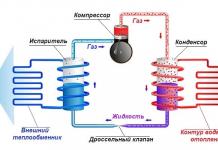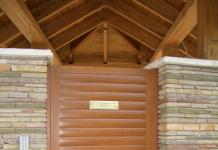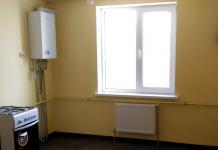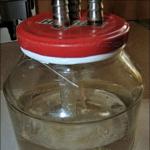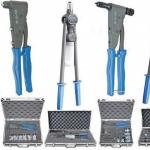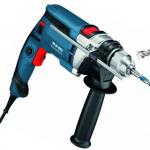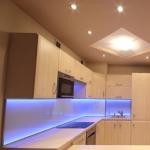Modern city apartments have everything you need for a comfortable stay: heating, sewerage, water supply and sanitation. From the point of view of design features, a centralized heating system is convenient. But, there are also disadvantages that encourage people to look for alternative ways to heat the room during the cold season.
Is it possible to install independent heating in the apartment?

Tenants of apartment buildings often think about how to abandon the state heat. But is it possible to install autonomous heating in an apartment?
To do this, the state must issue a number of permits. The arrangement of individual heating in the apartment is regulated nearby laws and normative-technical acts:
- Federal Law "On heat supply";
- Articles 26 and 27 of the Housing Code;
- Government Decree No. 307.
The complexity of the situation lies in the fact that permission for individual heating in an apartment can only be obtained with the consent of local authorities. The opinions of neighbors are also taken into account, and these are tens and hundreds of people. Municipalities meet residents halfway if they refer to Federal legislation and present arguments for the need to connect individual heating.
What makes tenants take this step?

Every time when heating tariffs increase, a number of residents think about switching to autonomous heating. Despite the considerable expenses for the implementation of such a reorganization of housing, the money invested is returned in a short time.
But besides the inflated tariffs, there are other reasons for switching to autonomous heating:
- unreasonably high cost of space heating services;
- heating is of poor quality, it is not enough to maintain a comfortable temperature in the home in cold weather;
- the need to use additional heat sources, which increases the cost of paying for services;
- due to the inconvenient location of the apartment, more heat is required (for example, the apartment is corner or located on the ground floor);
- depending on the timing of the beginning and end of the heating season. In autumn, tenants are cold, and in spring they suffer from heat and at the same time also pay for the service;
- the need to maintain a comfortable temperature in the room at any convenient time;
- willingness to pay only for actually consumed heat;
- if you need to leave the city, autonomous heating is simply turned off, without having to pay for a service that you did not use.
Advantages and disadvantages of individual heating

The procedure for switching to autonomous heating has both advantages and disadvantages. They should be considered in more detail in order to weigh the pros and cons, and make a decision.
Advantages:
- Saving. Residents who have switched to autonomous gas heating say that their apartment heating costs have decreased by about 7 times;
- Independence from the established dates for the beginning and end of the heating season;
- The ability to set the desired mode and adjust the temperature at your discretion. Modern systems allow you to set the time intervals in the settings when the temperature in the room will drop (for example, everyone at school or at work), and when it will rise by several degrees (in the evening, at night, when all residents are at home). This allows you to save additional money;
- Uninterrupted supply of hot water;
- The ability to choose any battery, as there is no possibility of water hammer.
TO shortcomings include the following:
- High cost of equipment;
- Dependence of modern equipment on power supply;
- The need to install a new heating circuit;
- The need for arranging a suitable exhaust duct.
Getting permission

For obtaining a permit for the arrangement of individual heating in a room, they apply to the district administration, in particular, to the interdepartmental commission responsible for the use of the housing stock. Authorized employees consider the sanction and give an answer within one and a half months after the date of application. You can also find a list of required documents there.
It is worth noting that obtaining a permit varies depending on which type of autonomous heating you choose: electric or gas.
At switching to electric individual heating is sufficient:
- Submit an application for refusal of centralized heating;
- Obtain consent from authorized bodies;
- Submit a written request for the installation of autonomous heating in the apartment to the district branch of the network.
For arrangement gas boiler a number of requirements are required:
- Submit an application to the gas industry;
- Contact the fire brigade to obtain a document on the health of the ventilation and chimney;
- Obtain written permission from the neighbors to install individual heating in the apartment. This is important because the refusal of a number of residents from centralized heating leads to system failures;
- It is necessary to find out who has pipes and batteries at their disposal. If the household is responsible for their serviceability, you will need to ask permission from the residents. If they are managed by public services, an application is submitted with a request to turn them off;
- Contact the city heating network to obtain permission to draw up and approve an individual heating scheme.
Having received permission and certificates in hand, they proceed to dismantle the old system and install individual heating in the apartment. In practice, it takes from 3 to 6 months to draw up documents and obtain a permit.
The gas utility may refuse to install the boiler if the technical characteristics of the system are not designed to provide the required pressure. In this case, pay attention to other sources of heating.
A technical passport and a diagram indicating the installation location of the boiler are provided to the gas facilities. After the approval of the boiler chosen for installation and after the terms of its installation have been agreed, you can proceed directly to the installation of the individual heating system.
Only employees of companies supplying gas have the right to connect individual heating in an apartment. They also have the appropriate permission for such work. It is not recommended to engage in self-assembly of the system in order to avoid litigation.
Required documents

Installing your own heating system refers to the refurbishment of a dwelling. List of required papers includes the following:
- An application made in a special form;
- Documents establishing the right to own housing: a certificate of state registration, an act of transfer to ownership, a donation agreement, a document on the right of inheritance, etc.;
- If the apartment is in shared ownership, certified copies for each owner, and a statement with the signatures of all owners;
- A copy of the technical passport of the premises;
- In the case of public housing, the consent of the family members of the tenant and the tenants of the apartment building is required. The document is drawn up in the form of minutes of the meeting of apartment owners;
- If the house is an architectural or historical value, they apply to the body responsible for the protection of architectural monuments, which issues a conclusion on the possibility of redevelopment.
In addition to the above, there is also technical documentation:
- Redevelopment project for the installation of a gas boiler. Includes gasification of the premises and changes to the central heating system;
- A copy of the passport for the electric boiler;
- An agreement confirming the permission of the maximum power that exceeds the capabilities of the boiler (electric);
- TU for disconnecting the wiring in the apartment from the common house heating system;
- TU ventilation;
- Specifications for supplying gas networks.
So, where can a tenant get the necessary documents? Collecting the required certificates can take a lot of time and effort, as you have to apply to various organizations:
- To obtain permission to turn off the apartment from the centralized heating system, they turn to the city heating network. The organization issues a refusal in the event that the removal of radiators will lead to a malfunction of the equipment in neighboring apartments;
- To obtain technical specifications for the installation of a gas installation, a gas service gives. Apply to the district housing office;
- The design organization is contacted for a conversion plan. The document should contain information about the future system, technical solutions, calculations;
- Next, it is necessary to coordinate the redevelopment project with organizations from which technical specifications were obtained, with the fire service and SES authorities.
The end of the official registration of the autonomous heating installation will be the receipt of the acceptance certificate. The document is obtained when all the installation work of the new system is completed.
Installation sequence

Some tenants refuse central heating in an apartment building. Those wishing to install individual heating will have to comply room requirements established by law:
- Room parameters: area - from 4 sq. m., ceiling height - from 2.5 m.;
- Door size - at least 80 cm wide;
- The room should have a natural light source, at least 1 window;
- It is forbidden to place heaters or a gas stove near the boiler. The minimum distance between them is from 30 cm;
- The boiler is installed only on a load-bearing wall;
- To fix the heater on the wall, select a place. The distance from the floor is at least one and a half meters.
When carrying out individual heating, it is necessary to follow the instructions for handling the units. Gas boilers are installed only by employees of the gas service.
In practice, it is possible to carry out individual heating with your own hands, but only at the final stage. This is the installation of radiators and plumbing. But the installation of the boiler, the installation of auxiliary equipment, the supply of gas and the laying of risers are trusted by the employees of the gas service, or by specialists who have been accredited by them.
After the individual heating system is installed, it is checked for leaks. The recommended method (but also dangerous at the same time) is to fill the system with coolant. If there is a leak, the consequences are immediately eliminated. Basically, the leak occurs at the junctions of the radiator sections or pipes.
How is the heating fee calculated for individuals?

According to the decision of the Constitutional Court, adopted on December 20, 2018, the Government of the Russian Federation approved a new calculation procedure for heating, starting from December 28, 2018.
The resolution concerns 2 categories of homeowners: those who have installed individual heating meters and individual boilers for heating. Previously, the law did not provide for the calculation of payment for heat if not all owners had heat meters in the MKD.
Now the owner will pay separately for personally consumed heat and separately for heating common property, including basements, entrances, etc. For the total heat consumed, payment will be made according to the share in the common property.
According to the adopted amendments to the Rules for the provision of utility services to owners No. 354, changes have also been made to the Housing Code. They oblige when calculating the payment for heating to take into account the readings of individual heat meters.
So, all owners of apartment buildings who want to install individual heating can not worry about higher tariffs and unfair redistribution of heat payments.
Connection cost
To establish autonomous heating, it is necessary to raise a considerable amount. The cost consists of the following components:
- apartment size;
- selected materials;
- selected boiler;
- pipes;
- heating scheme: one-pipe or two-pipe.
For example, to install individual heating in an apartment in Moscow, you will have to spend at least 2,000 USD. e. The complexity and volume of work are taken into account.
But, subsequently, the savings in paying for utilities will cover the costs. In the long run, you create the desired comfort in the apartment for less money.
Many are interested in whether it is possible, without experience, to install radiators and do the wiring of heating pipes with their own hands. I will answer - you can! The process itself does not have any technological difficulties, and if you know how to make at least a little, then the installation of heating will definitely justify itself.
Those who have already experienced the replacement of heating systems know that this procedure is quite expensive. Moreover, the price is high precisely for the performance of the work itself on the installation of pipes and radiators, rather than for the material.
If you want to make your apartment warmer, then simply installing new pipes and radiators will not get off. It is necessary to take measures for warming: replace the windows if they are old and wooden,. These measures will make it possible to save not only heat, but your money.
Helpful information:
When insulating, you may have to change both the subfloor and its coating, for example, laminate. A major overhaul will allow you, when installing heating radiators and pipes, to hide communications under the floor. As a result, you will spontaneously get hidden wiring.
Concealed piping and floor insulation
If we take the aesthetics, then the heating pipes hidden in the floor are very useful. At the same time, remember that you must have access to the mounting connections at any time. And suddenly there is a breakthrough somewhere.
That is why the floor must be done deliberately. In cases where there is absolutely no need to insulate the floor, and the rough coating itself is laid on the logs, then heating pipes can be laid between the logs. Access to the pipes should be precisely at the points of their connections, which can subsequently, with poor-quality installation, leak.
If you need to insulate the floor and would like to hide the heating pipes, then an additional foam concrete screed would be the best option. To do this, you need to perform some actions:
- We lay thoughtfully all heating pipes.
- We fill the floor with an additional foam concrete screed. Where there are pipe connections, we make a small manhole. We wait until the screed is completely solidified.
- As soon as the screed has hardened, a rough plywood floor can be laid, in which holes are cut at the heating mounting joints.
- We lay a finishing flooring on top, for example, marmoleum, in which it is also necessary to cut out hatches so that there is access to the heating installation joints.
IMPORTANT! If you are hospitable and you often have companies in the evenings, then it is advisable to lay the subfloor from tongue-and-groove plywood. It will be much stronger, but at the same time a little more expensive than ordinary plywood sheets.
How to choose pipes for heating
This question is quite important, since not only the durability of your heating system, but also thermal conductivity will depend on the material, if you do not take into account the complexity of the work and the price of materials.
Steel


This is actually an eternal heating system and about steel pipes, it’s almost impossible to say something bad. At the same time, steel pipes will be the cheapest among other types. However, there are two buts that cannot be ignored.
- It will be difficult to work with steel and this requires a welding machine. Therefore, for independence, you must have the skills of a welder. If you do not have such skills, then it is better to hire a specialist, as a professional welder will put a seam that will be forever tight and you will sleep peacefully.
- If you are going to install aluminum heating radiators, then be sure to insert polypropylene inserts between the radiators and pipes. Otherwise, the mounting joints between aluminum and steel will give the effect of a galvanic couple and electrical corrosion will begin.
Polypropylene


The advantage of polypropylene pipes is that they do not give off heat to the ceiling, have good soundproofing properties, and are easy to install. It is the main competitor to steel pipes in heating systems. If all pipes in an apartment building are replaced with propylene ones, then the heat leakage will be several times less, which will naturally affect the amount of payment for heating.
Polypropylene is quite comfortable to work with. Soldering the plumbing system is fast, which cannot be said, for example, about metal-plastic pipes. Yes, and by themselves, these pipes are now in vogue. Many people change metal water pipes for polypropylene ones, as this significantly reduces the cost of replacement work, and the cost of the pipes themselves is not high. In addition, with the help of propylene pipes, you can lay the wiring the way you want.
metal-plastic


Metal-plastic heating pipes will cost a little more than polypropylene pipes. During installation, heating will also require additional equipment: a flaring press, a pipe cutter, a pipe bender. With all the positive qualities, there are also disadvantages. Often the gaskets in the connectors leak. The pipes themselves do not like direct sunlight. Metal-plastic pipes do not tolerate impacts on them.
The only plus is that it is much more profitable to make heating in an apartment from metal-plastic pipes. If you rent equipment, then the price will be much cheaper than buying various fittings. Since pipes made of metal-plastic can be bent, the length of the pipes is shortened accordingly. The pipes themselves are quite thin and it is easy to hide them under the floor.
Copper pipes


So that the sellers of copper pipes do not talk about copper, about its qualities, let them keep copper pipes for themselves. I'm not saying copper pipe heating is bad. It's all about soldering pipes. Between themselves, the pipes are soldered with tin. By itself, tin is not hard enough and reacts chemically with oxygen, which will gradually destroy the solder.
Every radio amateur knows that over time, the old solderings on the parts are destroyed and they need to be re-soldered. In the same way, tin is destroyed when soldering copper pipes. If you take copper for a water supply system, then there is still a moot point, but you won’t bring heat in a bucket from a column in winter if a leak forms in the mounting connection.
As a result, we can summarize the selection of pipes for heating. In apartments, you can safely install heating, namely, to lay pipes made of metal-plastic. If this is a private house, then polypropylene or steel would be the best option.
Radiators for heating


There are no problems with radiators. The only thing I should note is when you buy radiators and want to hide the heating pipes in the floor, make sure that the supply and return connectors are located at the bottom.
All connection points in radiators, during their installation, must be sealed. This is done using ordinary linen tow. Until now, no technological tricks can replace it.
Insulating mats


Whether you decide to replace radiators or not, you still need to think about how to cut off the heat flows that go outside. For this, there are special aluminum insulating mats that are installed on the wall behind the heating radiator. If you take block Khrushchev, then with installed mats, heat transfer from the battery increases by 20 percent.
The insulating mat is easy to install. It is necessary to cut holes in the insulation for hooks on which radiators hang. Apply silicone or mounting adhesive to the wall itself. Next, we take insulating screens, put them on hooks and press them against the wall, gradually smoothing them out. Do not use insulating mats made of mineral wool. The glass included in the composition can harm your health. Thermal insulation mats should be made of natural or organic fibers.


If you want to give an aesthetic look to old radiators, then special radiator screens are needed. Many make their own, many buy. Remember that not every screen will be good, as thermal conductivity must also be taken into account when installing them.
Heating wiring diagram in the apartment


The transfer of heating radiators is a complicated process, not in terms of installation, but obtaining special permission for this and agreeing technical documentation. Therefore, consider the heating scheme when the radiators remain in their own places.
If you take it in a simple way, then the whole system remains in its place, only you can change the pipe layout a little by hiding them under the floor. If you professionally approach this issue, then it is necessary to install two ball valves for each battery before and after. If suddenly your radiator leaked, then with the help of these taps you can shut off the water supply to the leaking radiator, thereby the rest of the system remains fully operational.
If you chose steel pipes and aluminum radiators, be sure to make propylene inserts, as shown in the picture. This will give a chance to avoid corrosion of the two metals.
Soldering polypropylene pipes


The soldering process itself is quite simple, you just need to purchase a special curling iron for this. Do everything carefully, because you know that if trouble comes at the start of the heating season, it will bring serious consequences.
IMPORTANT! The basic rule when soldering propylene pipes is that they must not be soldered end-to-end. For this you need to use special fittings.
Remember that any connections, with hidden pipe wiring, must have access. In order to get the pipes in the right direction, special angles and tees are used.
You can reconstruct the heating system in the apartment on your own and the work itself is not difficult. If you are not going to transfer the radiators themselves, then there is also no need to take permission to replace the heating system. The main task for you will be the choice of pipes for heating, the choice of the radiators themselves, as well as the insulation of the floor and the apartment. This is necessary in order not to heat the street and keep warm.
tweet
Pin it
Like
Instead of a preface
September was always the worst month for me, the nights were already getting cold, it was starting to rain, the temperature in the apartment fluctuated around 20 degrees, or even less, but the heating was always turned on in early October. Until they had to hold out. How?
I took out my faithful home “fur coat” from the closet - a bathrobe, put on woolen socks and bought packs of green tea. All this arsenal helped to somehow warm up until October. Especially this article will be appreciated by hypotensive patients, and in general by people with problematic vessels, who even in the heat have cold feet and hands.
A few years ago I decided to improve my living conditions and bought an apartment in a new building. But I became the owner of not a simple apartment, but with individual heating, or in a simple way - with a boiler.
Today there are more and more such projects. Not only townhouses are equipped with boilers, but also ordinary low- and mid-rise apartment buildings. In my house, by the way, 9 floors. In Moscow, all new buildings with central heating, but in New Moscow and, especially in the Moscow region, there are projects with individual heating: LCD "May", LCD "Pavlovsky Quarter" (OPIN), LCD "ZaMitino", LCD "Novogorsk Park", etc. .
So, if you live in an apartment with central heating, but are looking for an apartment (or townhouse) with a boiler, you need to know a few things about it. I will say right away that in this text there will be no praises for the boiler, because this type of heating is not suitable for everyone. But, if it does, then it will be impossible to get away from the boiler.
Advantages of an apartment with a boiler
I have a German Buderus boiler installed in my apartment. There are other common brands: Viessmann, Baxi, Bosch, Vaillant, Navien. There are also domestic brands - Rostovgazapparat, Lemax, ATON. As the owner of an apartment with a boiler, I now “sit” on several specialized forums where we all share useful information, pluses and minuses.
First, about the good, about the benefits. I have only 3 meters in my apartment: for cold water, for gas and for electricity. All. I don't pay for central heating or hot water. That is why I am not afraid of planned and emergency shutdowns of hot water. Operation "basin" is a thing of the past.
I am no longer afraid of September, when the apartment becomes uncomfortable, cold and I have to walk in three pants, socks and a bathrobe to stop chattering my teeth. I can set the thermostat to the temperature I want, whenever I want, and heat the apartment. When the thermostat fixes the set temperature, the boiler turns off by itself. And it turns on again when the thermostat "understands" that the apartment has cooled down.
But the main advantage of the boiler is, of course, savings. In the very first month after the move, I could not believe my eyes when I calculated how much gas I spent - I had to pay 400 rubles for April. This, along with heating water and taking into account cooking (and I often use an oven, which is also gas). In an old apartment (an ordinary panel house) in winter, I had to pay 2500-2800 only for central heating. Yes, the batteries were hot, and the apartment was always around 27-28 degrees (the guests said “well, you have Africa!”), But isn’t it preferable to make 25 degrees and pay less?
Isn't it great that the batteries can be turned off when it's a warm day? In a word, in a new apartment with a footage of 70 square meters. meters, I pay 350-400 rubles for gas per month in the spring, while in the former apartment of 50 square meters. meters almost 3 thousand rubles. Of course, even a cold spring is not a winter with 30-degree frosts, so I “tortured” the craftsmen who did the repairs for me - did they freeze in this harsh winter? Was the boiler working well? According to reviews, it was normal, they worked in T-shirts, no one died.
A big plus of apartments with boilers is that according to the project, the owner of the apartment can make himself not an electric, but a water floor. The heat-insulated floor is as batteries only horizontal. My friends who live in the townhouse did just that. According to them, the air in the premises warms up so quickly that a warm floor can easily replace batteries. I can only dream about it, because. i got an apartment with a screed, in which pipes were already laid (beam wiring), but, for example, the central part of the hallway turned out to be with this very warm floor, because. there are pipes to the radiators in the nursery and to the heated towel rail in the bathroom.
The consumption of cold water, of course, is more, but not by much. If in my previous apartment it took me 3-4 cubic meters of cold water and 2-3 hot ones (for two), then in this apartment I get 8-9 cubic meters of cold water per month.
Speaking of cold water. Recently a cold water pipe burst a block away. And that's all - there was no water in the taps, and the repair of the pipe took almost 6 hours (well, the day turned out to be warm). But this problem is also true for houses with central heating, where, when repairing pipes in the yards, absolutely everything is blocked: both water in taps and batteries.
A big plus: heating in an apartment with a boiler does not depend on accidents - the water in the system (in batteries) is hermetic (watch the pressure in the system - it should ideally be 1.5 bar), so even if a pipe breaks in the yard - you have apartment, the water will spin in the batteries, passing through the boiler and heating up there, i.e. the apartment will be warm whenever you want.
But, yes, here I smoothly move on to the minuses of individual heating. Minus the second - if you live in an old area, there is a high probability that communications are outdated, which means that electricity can “jump”, unfortunately, boilers are dependent on power surges. Therefore, you will have to buy and additionally install a voltage stabilizer (in Leroy Merlin from 5 thousand rubles).
As for the fears that boilers "eat" a lot of electricity, then you should not be afraid, on average, the boiler consumes 120 watts, i.e. like one light bulb (“washer” or slow cooker eat much more). But as for hard water, then you should be wary. Advertising about washing machines, where the heating element, which can become scaled and fail, is also relevant for boilers.
Craftsmen write amazing stories on the forums about how to clean the heating element of the boiler with citric acid and other sentimental posts on how to get rid of scale. I do not advise you to engage in "self-treatment", I entered into an agreement with a service company (accredited at Gazprom), whose employees come and service the boiler once a year. It includes descaling, dust removal and diagnostics of "electronics". The issue price is 2-2.5 thousand rubles. There are many companies that service gas equipment, you can find it cheaper.
You can also just install a filter and change it after a while - depending on how hard the water is in your area. Our developer did it easier - he installed a water treatment plant for all 200 apartments under the house. As soon as the house was 60-70% occupied, it was launched. But, as you understand, maintenance once a year does not cancel this. Dust, which accumulates a lot during repairs in the boiler, is just as harmful to it as scale on the heating element (tubular electric heater).
Some brands of boilers can work quite noisily - this is another minus. For example, my Buderus works quietly, but my friends have a Baxi boiler, and although they have already got used to it for 3 years of living with it, they do not deny that the boiler makes noise from time to time (when you have to heat both water and batteries, i.e. work at full capacity). When I asked them - how noisy is the boiler? They answered that it was a little stronger than a refrigerator. So a small 1-room apartment with a boiler for an elderly person, especially if he is sensitive to noise, may not be the best option for living.
Well, the last disadvantage of boilers is that it is difficult to “hide” it when buying a kitchen. This, in my opinion, is both fair and wrong. In the process of selecting a kitchen set, I turned to 4 companies. Two of them drew beautiful kitchens for me, but the functionality of the boiler was ignored. I mean that when a specialist from a service company or just a gasman comes to you with a routine check - he should easily gain access to the boiler. Therefore, various doors and cabinets must be opened or quickly removed so that a person does not have to diagnose the boiler in a half-bent form.
Keep in mind that gas workers can also be fined if you "brick up" the boiler, because "but it's so beautiful." Unfortunately, aesthetics take a backseat here. In addition, if due to a beautiful, but incorrect design, the boiler fails in winter, I'm afraid that beauty in a 20-degree frost will not warm you.
However, today the market for kitchen design is diverse, and hiding the boiler so that it is always accessible is easy enough. The cheapest and most minimalistic way, in my opinion, is an ordinary roller blind (pull the rope, the boiler will open), however, there is a nuance: it is advisable not to install anything butt-to-butt to the boiler, and also not to attach at the top.
So, let's sum up.
Boiler advantages:
Hot water outages are not terrible;
You can turn on the batteries and heat the apartment at any time;
You can heat your home by setting an individual (convenient) temperature;
The ability to make a warm water floor;
Savings, significant monetary savings;
Now the cons:
Dependence of the boiler on power surges, due to which the electronics may fail and repairs will be required;
Water hardness can damage the heating element, and it will have to be changed;
Some brands of boilers are quite noisy;
- you need to “hide” the boiler in the kitchen set so that it has easy access on demand.
Now a few numbers - we have a text about personal experience. Now, in the spring, I spend no more than 10 cubic meters of gas per day (take at least the recently ended April), because. I heat the apartment before going to bed and in the morning, after I air it out. On warm days, when heating is not required at all, 1-2 cubic meters of gas per day are consumed. The price of one cubic meter of gas is 4.7 rubles - consider for yourself (in September 2018, a cubic meter of gas costs already 5.3 rubles - approx. Novostroy-M).
A cube of cold water costs a little more than 20 rubles, if 8-10 cubic meters are spent per month, then we get 200 rubles with kopecks. Boiler maintenance is carried out once a year and costs, as I wrote above, 2-2.5 thousand rubles, that is, as much as I paid per month for central heating.
Of course, in modern new buildings, there are heat meters at the entrance to the apartment. However, here it’s like with ODN for electricity - no matter how much electricity is “burned”, the rest of the common house will be scattered over all apartments, and you will have to pay. With the boiler, everything is strict - how much gas they used up, they paid for that much.
This text should not be taken as propaganda “buy apartments with individual heating!” Even I couldn't live in a small apartment with a noisy boiler. But the very fact that the modern market of new buildings offers an alternative to central heating is very pleasing. Tomorrow, here again they promise no higher than +4 degrees, I'll go hug my boiler.
Publication date May 10, 2017Individual heating in the apartment - gas or electric?
5 (100%) votes: 3Many residents of high-rise buildings are thinking about individual heating in the apartment. But not everyone turns their ideas into actions, because the refurbishment of an apartment requires patience and perseverance when going through various instances and collecting special documents.
An autonomous heating system can guarantee you a stable heating of your home during the cold season. You will not depend on scheduled / unscheduled inspections of the heating system with hot water shutdown. In addition, you will have the opportunity to rationally use the energy carrier and save a little.
If you believe the statistics, installing individual heating in an apartment saves the owner's money by 2 times, and when heating the liquid - 3 times from the usual spending on centralized services.
Advantages
Common reasons why people decide to install an autonomous heating system are:
- heating quality. Not all residents of an apartment building can be satisfied with the temperature level in the premises and discomfort in the off-season.
- I would like to independently control the supply of thermal energy.
- There is an opportunity to save utility bills.
How to make individual heating in the apartment? You will have to dismantle the old pipes and batteries, install new ones and connect them to the heating boiler.
Boiler equipment will heat water and drive it through all pipes. Thus, the apartment will be filled with warmth. Hot water can also be connected to the boiler.
Individual gas heating in an apartment with a turbocharged boiler
Gas or electric heating?
When planning an autonomous heating system, it is worth deciding on the type of equipment: gas or electric. We are talking about the system of the boiler itself, because the heating of the apartment is still carried out by the liquid that circulates through the pipes. The unit only heats water due to gas or electricity.
Of course, gas heating units are more popular.
They are chosen because:
- They are economical, because gas is the cheapest type of energy carrier.
- Available in floor and hanging versions. All models are quite compact.
- Individual does not require connection to the power supply. In the event of a power outage, the apartment will still remain warm.
- Such units are highly efficient, one boiler can cope with the heating of a large apartment.
The choice and installation of gas equipment requires a responsible approach. Gas is dangerous, therefore, in order to eliminate possible troubles, it is better to seek help from professionals, they will correctly install all the equipment.
If in your house, in principle, there is no possibility of supplying gas, then it is worth considering individual electric heating in the apartment. It has the following advantages:
- low cost of the boiler itself;
- safety;
- simple maintenance;
- environmental friendliness, because the equipment does not emit foreign odors and does not make noise during operation.
The only disadvantages include the fact that when installing such a unit, the payment for electricity logically increases. In addition, the apartment requires good wiring that can withstand high voltages. Power outages deprive a home of quality heating.
These are the main pros and cons of an apartment with individual heating. Before the final decision to convert the heating system, read the reviews on the Internet, make up all the pros and cons.
Single or double boiler?
Heating units are divided into single- and double-circuit. The former are intended only for heating, however, if desired, you can connect a boiler and heat water for the kitchen and bathroom.
The latter, in addition to heating, also heat water for domestic needs. This function is performed by the built-in heat exchanger. New units can have either one or two heat exchangers.
If there is only one exchanger, but when the liquid is heated, the heating is turned off. This is not always convenient, namely in the cold season. At the same time, the two exchangers operate separately and do not depend on each other. At the same time, both water and the apartment can be heated.
Documents to collect
In order to find out if it is possible to make individual heating in an apartment, you need to contact the interdepartmental commission that is responsible for the use of the housing stock and collect installation permits.
You will have to collect the following documents:
- Write an application with a request to install autonomous heating.
- Obtain approval from all apartment owners.
- Minutes of the meeting of all tenants of an apartment building with consent for installation.
- Legal documents for housing.
- Registration certificate of the apartment with a copy.
- In the case when the house is considered a monument of architecture, it is necessary to obtain the opinion of the relevant authority on the legality and possible refurbishment.
An individual heating system in an apartment involves the collection of various technical documentation, including an apartment redevelopment project and copies of documentation for the purchase of a boiler.
To collect all the necessary papers, you will have to show perseverance and perseverance, visit many services and organizations. When a decision is made to purchase an electric boiler, an application for permission should be written in the city's electrical networks. Installation of gas equipment is coordinated with the city gas service. The masters will check the apartment, as well as the serviceability of the smoke ducts.
Only the city heating network can allow turning off central heating. A new project for organizing an apartment will be handled by a design organization. In addition, project documents are coordinated with the bodies of the sanitary and epidemiological service and fire protection.
After collecting all the permits, you can proceed to the purchase of equipment and the conclusion of contracts with specialists, which will quickly and reliably organize individual heating in the apartment. But this is not the end. After all installation work, you will need to obtain an acceptance certificate.
Which radiators to choose?
Sectional radiators are best suited for organizing autonomous heating. The length of the radiator depends on the quality of the heat transfer of one section.
Heat dissipation, in turn, depends on the material from which it is made. One section of, say, gives off 110 watts of heat - 85 watts, a design of - 175-199 watts. In the case, this is 199 watts.
To calculate the area that is heated by one section with a ceiling height of 2.7 m, divide the heat output of the section by 100. Let's say a cast iron battery section heats 1.1 m².
Depending on the size of the room, you can calculate the number of sections for radiators.
Installation of an autonomous system
Have you decided to organize individual heating in the apartment with your own hands?
Then, after you have collected all the necessary documents and decided on the energy carrier, you need to select the boiler according to its power.
How is heating consumption calculated? This is done at the rate of 100 W per 1 m² of area. Usually this is enough. After all, even a corner apartment has many common walls with neighbors through which heat does not escape.
The wiring diagram may be different depending on the size of the apartment. For small areas, a single-pipe “Leningrad” may suffice, for those that are larger, a classic two-pipe system with a lower wiring.
Remember that in residential conditions, only mounted boilers from gas or electricity, which already have a circulation pump, and in some cases an expansion tank, can suit you. Therefore, the system will be closed with forced circulation.
In addition to the development of a new project, documents should have a section showing the dismantling of the old system.
It is necessary to disassemble and dispose of radiators and connections to them. Risersthat pass through the apartment, it is forbidden to touch. Instead of the cut out, it is required to weld a straight section of the pipe. The risers need thermal insulation.
The new scheme of autonomous heating should be with the installation of batteries with thermostatic inputs.
The type of gas boiler depends on the presence of flue ducts. If they are present, then you can purchase a conventional boiler with an open combustion chamber.
It is forbidden to connect the boiler to exhaust ventilation shafts. In the absence of smoke paths, only a turbocharged heat generator with a closed firebox is suitable for venting gases through a wall.
Autonomous heating has its own characteristics. It takes a lot of time and effort to collect documents and various permits, and there is no guarantee that you will be able to get everything. At the same time, such self-made heating will significantly reduce the cost of a communal apartment.
The price for the installation of an autonomous heating system consists of the size of the housing, the choice of materials, boiler equipment, pipes, as well as the heating scheme (one- or two-pipe). The complexity and volume of work plays a role. However, remember that your efforts will not be in vain.
For many apartment owners, the issue of heating in winter becomes an acute problem.
As experience shows, centralized heating is no longer justified, since either the equipment is old and simply “does not pull”, or the tariffs are unreasonably high.
Is it possible to do autonomous heating in the apartment? Autonomous heating of an apartment in an apartment building is a reality today, but before deciding to install a gas boiler or install underfloor heating, you should find out how legal it is, and which system will be cost-effective and reliable.
How to make autonomous heating in an apartment, read the article.
Autonomous heating in an apartment building
Is it possible to install autonomous heating in the apartment with your own hands? Although there is no legislative ban on autonomous heating, it is still it is advisable to consult a lawyer, as some heating systems are banned. For example, water heated floors in apartments cannot be installed due to the fact that they can overload the system, thus depriving other residents of the house of heat.
In other cases, it is required to collect the necessary documents and present them to local authorities:
- registration certificate for housing;
- application for refusal from central heating;
- document on the right of ownership;
- scheme of the new heating system;
- consent of all tenants.
As a rule, such a seemingly simple request as the refusal of central heating and the transition to the provision of heat itself turns out to be a lengthy bureaucratic problem.
Even more trouble will be the installation of autonomous heating in an apartment without a permit. This can end not only with a large fine, but also with a lawsuit, so before deciding to equip an apartment with any heating systems, you need to get advice from the relevant authorities and permission for autonomous heating in the apartment.
Schemes for autonomous heating of an apartment:


Advantages and disadvantages
If permission has already been obtained for autonomous heating in an apartment building, then you can proceed to the choice of an alternative type of heat. This is easier to do, knowing the pros and cons of autonomous heating in the apartment.
For the first time, an autonomous heating system for an apartment appeared in Europe. Due to its clear advantages over centralized methods of space heating, it quickly spread throughout the world.
 Advantages:
Advantages:
- The main advantage of the system is significant cost savings. The owner of the apartment independently decides when to turn on and when to turn off the heating. For example, today there are thermostats in which you can set a timer for a certain time, which allows you to either completely or partially turn off the system when no one is at home, and turn it on half an hour before the arrival of residents.
- The owner of the apartment can create the necessary microclimate in each room.
- Pay exclusively for the heating meter and not depend on public utilities and government tariffs.
When making a choice in favor of alternative heat, you need to find out in advance how much autonomous heating costs in an apartment, and what kind of it will be not only economical, but also effective.
Among the disadvantages of such a system, the following nuances can be noted:
- Its regular preventive check once a year, for which you need to call a specialist. It's not that expensive, but still, many users either ignore this need or simply forget about it.
- When installing even the best heating radiators for an apartment, you should remember about possible heat losses, which often cause external walls, unheated rooms from below or poor-quality glazing.
Today, many construction organizations are building residential apartment buildings with ready-made autonomous heating systems. Such housing is in great demand, as it costs a little less and allows the owners to decide for themselves which type of heating to choose.
Gas heating
As a rule, apartment owners have a choice between two types of alternative heat sources:
- Designs based on a gas boiler.
- Electrical heating systems.
Gas heating has several advantages:

When installing a new heating, the old system must be dismantled. It is easier and cheaper to install new radiators than to try to fit old ones to it. Although modern gas boilers have the highest degree of protection, gas leakage is still possible.
Selection of pipes, boiler and radiators
The operation of the entire system depends on the correct choice of the boiler.
They are:
- single-circuit;
- double-circuit.
For example, if water heating requires the installation of a boiler, then you can get by with the option of a single-circuit gas boiler.
Making a choice in favor of gas heating, it is better to purchase a boiler made of cast iron or a special durable metal. Although they are heavy, they will last much longer.
But pipes for a similar heating system fit polypropylene or metal-plastic, as a budget option, and copper, if the wallet allows it.
With radiators, you also have to decide in advance. Today, consumers are very popular bimetal heating radiators.
Which ones are actually better for an apartment can be determined by the amount of their heat transfer, for example:
- cast iron batteries give 110 watts;
- aluminum - 199 W of heat;
- steel up to 85 W;
- bimetallic - 199 watts.
Before buying radiators, it is necessary to calculate in advance how many sections will be required for each room. To do this, the heat transfer of the material must be divided by 100. For example, for a bimetallic radiator, it is 199 W / 100, which equals 1.99 W per 1 m2.
There are several nuances that should be taken into account when choosing radiators and calculating their number:

Having made all the calculations and adding to them the cost of the autonomous gas heating system itself, you can make a decision to buy it, or you can compare these figures with electric types of heating.
Electric heating
If you choose electricity as a source of heat, then you can opt for:
- on an electric boiler;
- cable underfloor heating system;
- on an infrared film field;
- on the heat pump.
An electric boiler is mounted in the same way as a gas boiler, but everything is simplified by the fact that it does not require a chimney and a ventilation system.
Warm floors, especially heating mats and film systems, have won the hearts of many consumers for a long time. They are a worthy alternative to centralized heating, and with a high-quality thermostat, they can significantly save money during their operation.
The operation of heat pumps is based on the pumping of air from the street and its heating. Modern air conditioners are also able to provide the necessary amount of heat to all rooms in the apartment, but, as consumer reviews indicate, it is warm floors that make it possible to create truly comfortable conditions.
